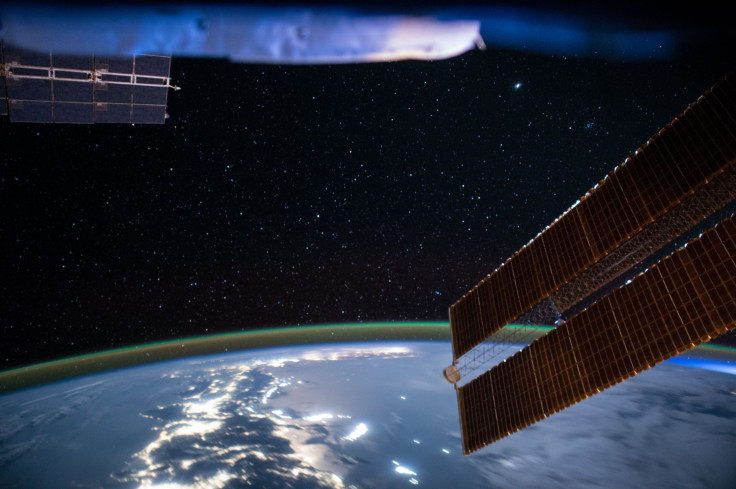Aurora Borealis Time-Lapse Video: Northern Lights Captured From International Space Station

On Sunday, American astronaut Scott Kelly released a short time-lapse video showing the Aurora Borealis from space. The footage, taken on the 141st day of the mission -- in line for a record-breaking year-long stint aboard the International Space Station -- shows the swirling green and violet river of the Northern Lights meeting the blinding white of the sunrise.
Day 141. The chapter of a day ends as it began. #Aurora on a sunrise. Good night from @space_station! #YearInSpace https://t.co/hZBMs9q0CS
— Scott Kelly (@StationCDRKelly) August 15, 2015Aurorae are produced when charged particles, carried by solar winds, enter Earth’s magnetosphere -- a region of space formed by the interaction between stellar winds and the planet’s magnetic field. Once within the magnetosphere, Earth’s magnetic field lines direct the charged particles toward its poles, where they collide with gas atoms in the atmosphere and produce the bright emissions associated with auroras. Oxygen, for instance, produces the green colors in an aurora while nitrogen causes blue or red colors.
Another pass through #Aurora. The sun is very active today, apparently. #YearInSpace pic.twitter.com/1uDtRzrGuY
— Scott Kelly (@StationCDRKelly) August 15, 2015Kelly is part of a joint mission by NASA and the Russian space agency Roscosmos that aims to understand how the harsh, low-gravity environment of space affects the human body.
Like his predecessor Chris Hadfield -- who, among other things, is known for his microgravity rendition of David Bowie’s “Space Oddity” -- Kelly has been sharing daily updates from the ISS since the start of the mission, posting images of the planet from above, including photographs that show human-inflicted damage to ecosystems.
#Deforestation changes the face of the Amazon rainforest. #YearInSpace pic.twitter.com/jLwMQbvN3o
— Scott Kelly (@StationCDRKelly) August 16, 2015Day 135. #MilkyWay. You're old, dusty, gassy and warped. But beautiful. Good night from @space_station! #YearInSpace pic.twitter.com/4q09y5CxGJ
— Scott Kelly (@StationCDRKelly) August 9, 2015© Copyright IBTimes 2024. All rights reserved.






















